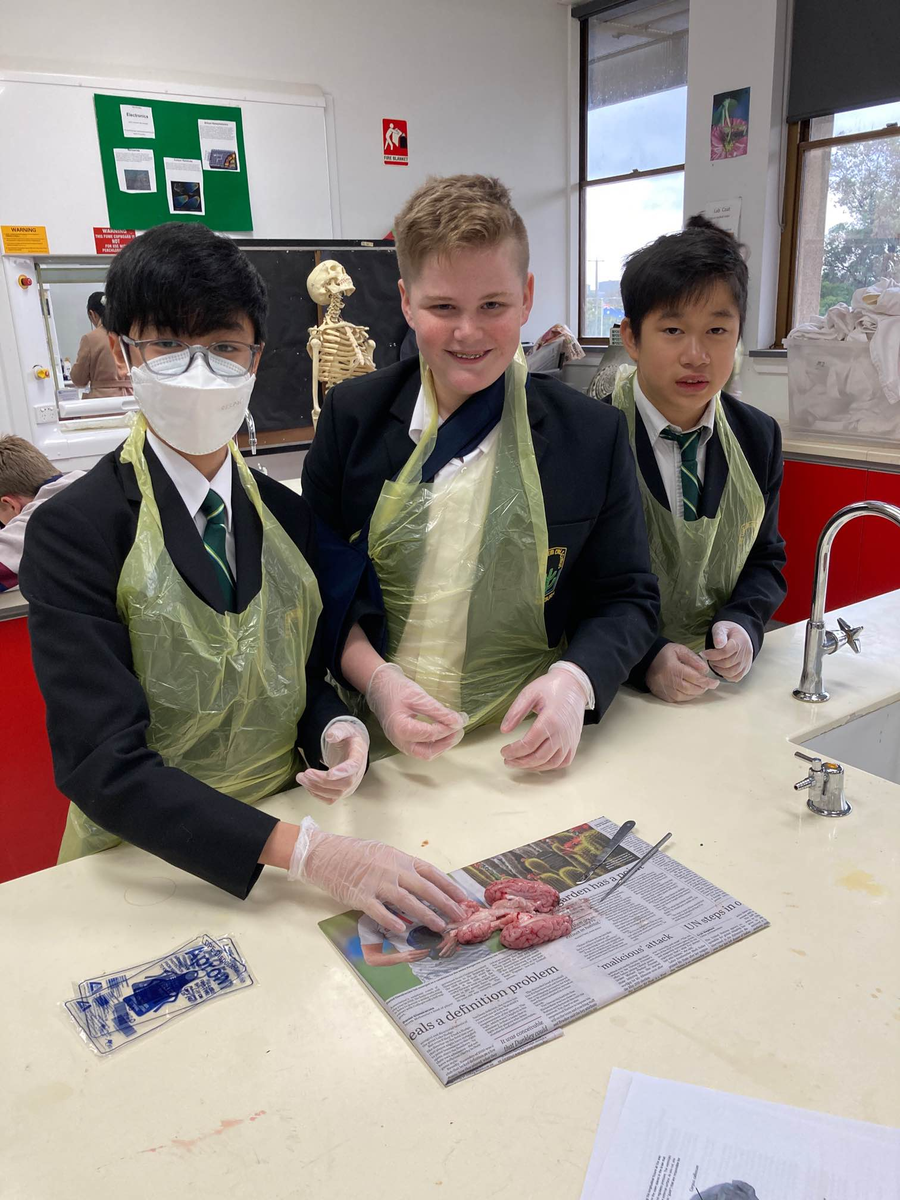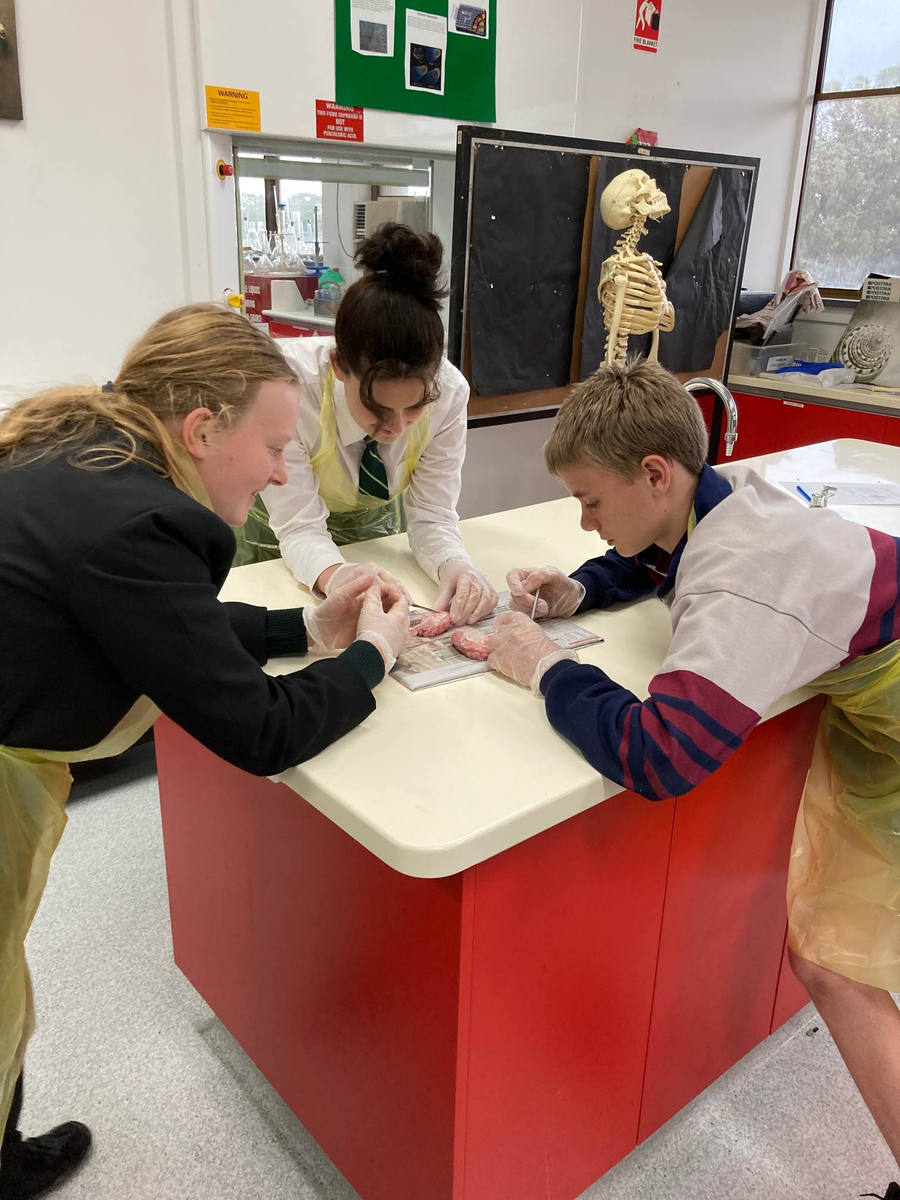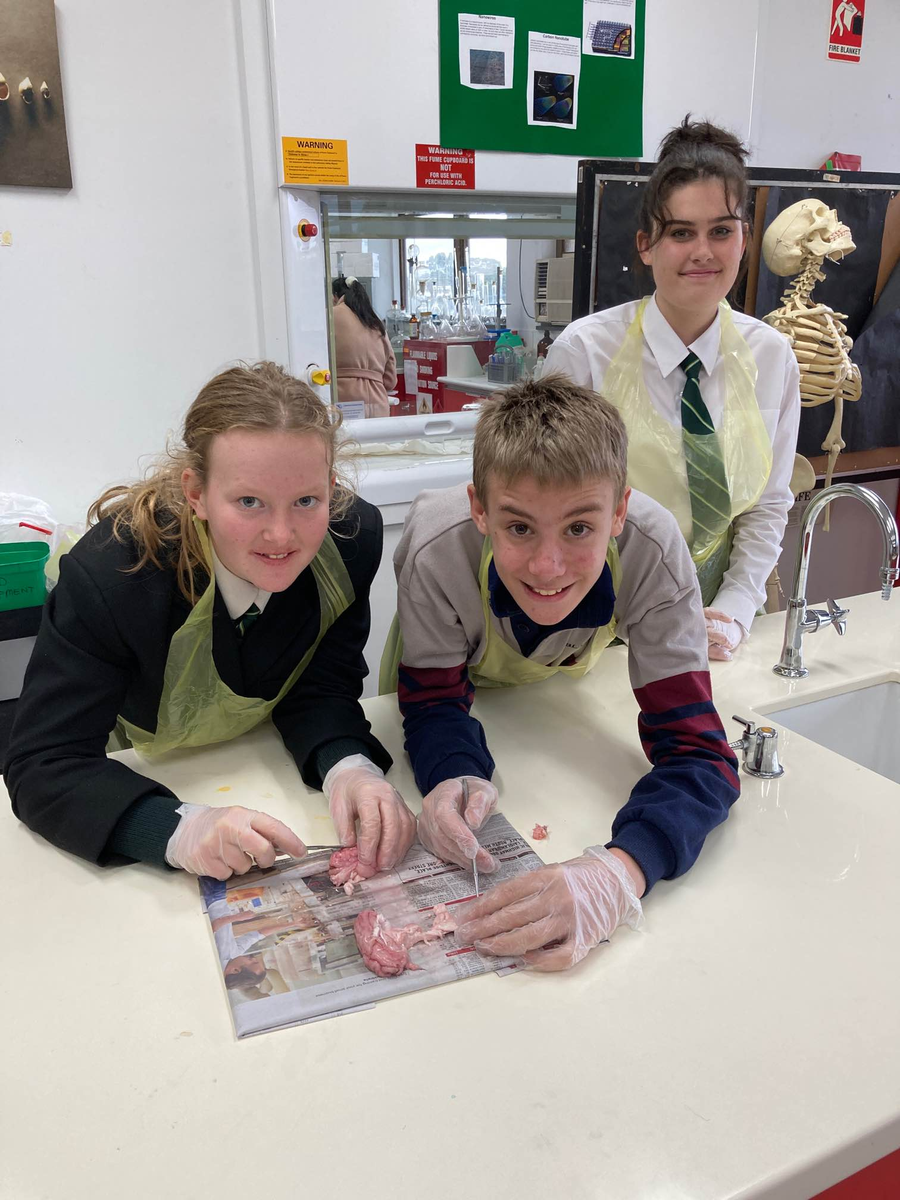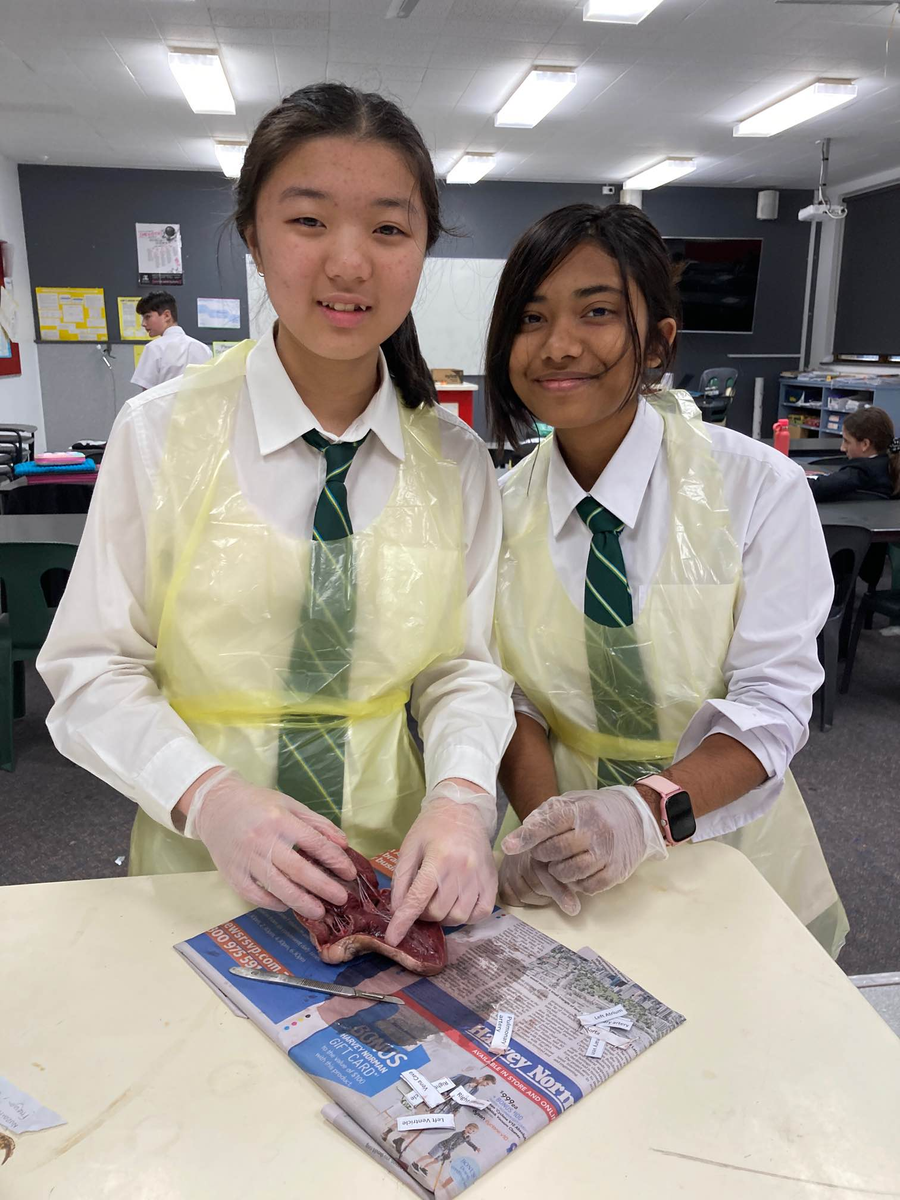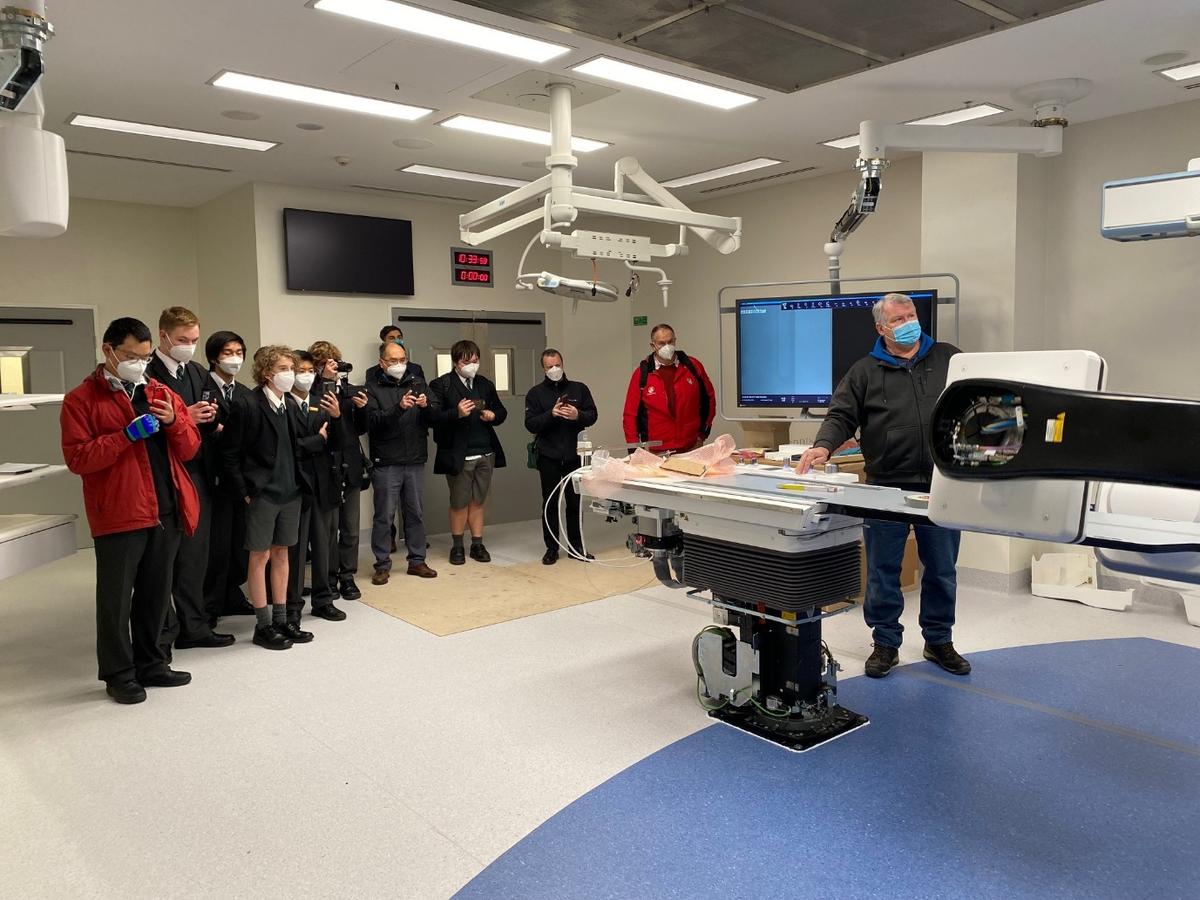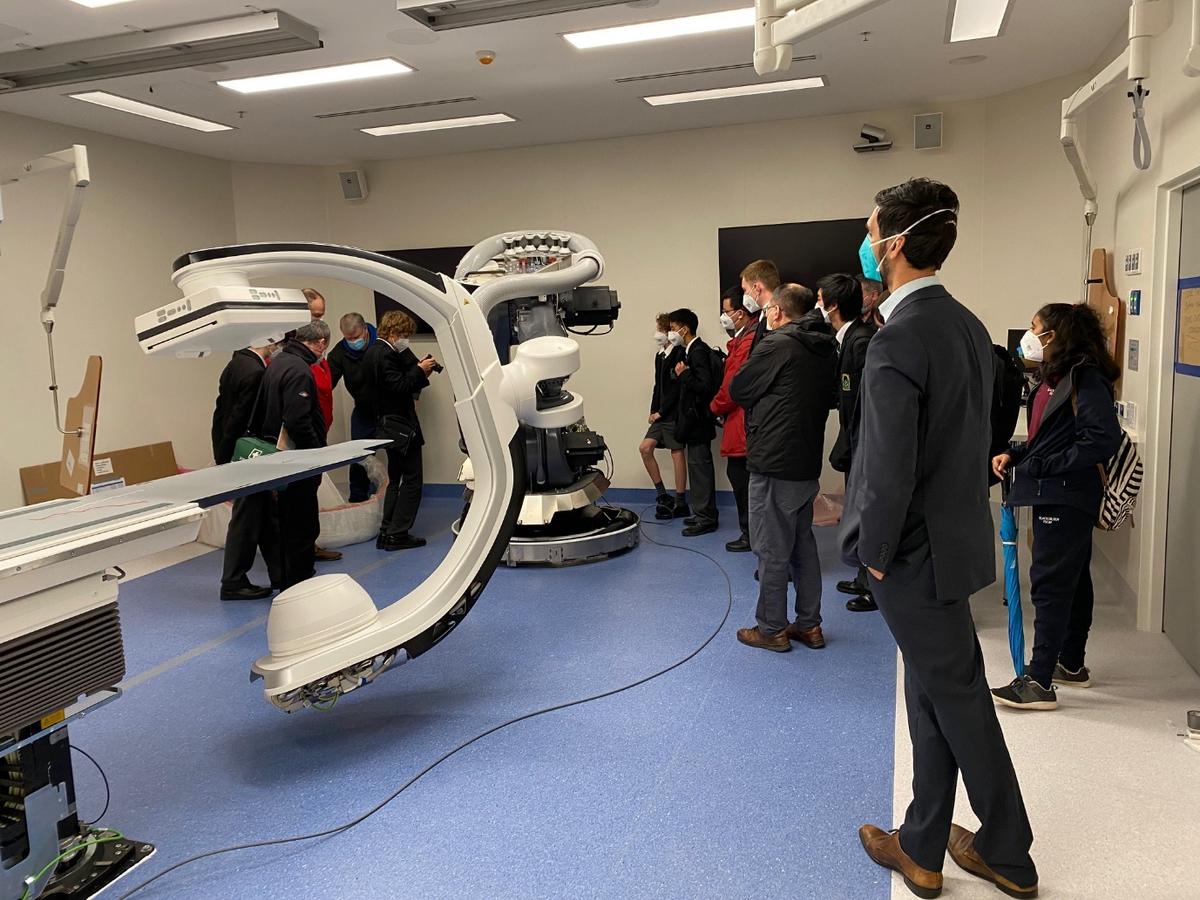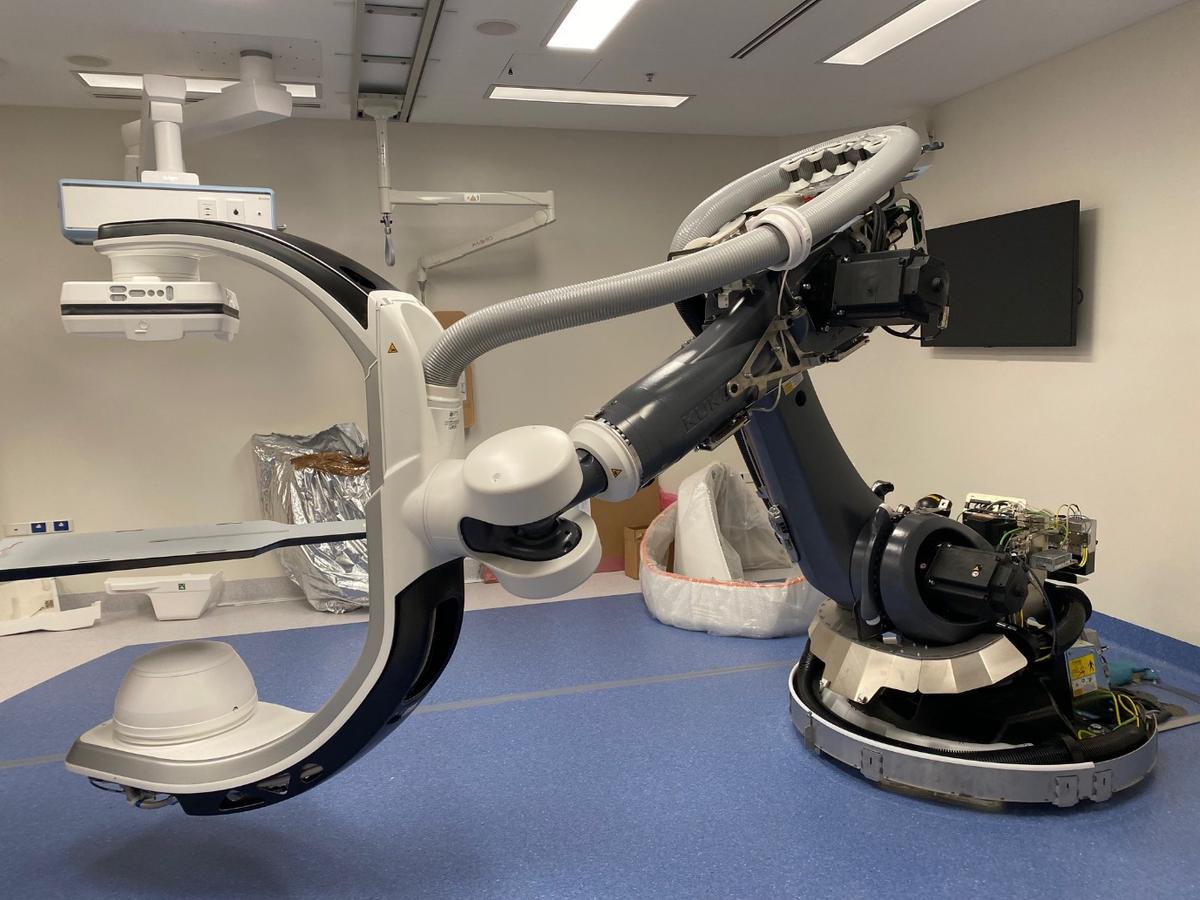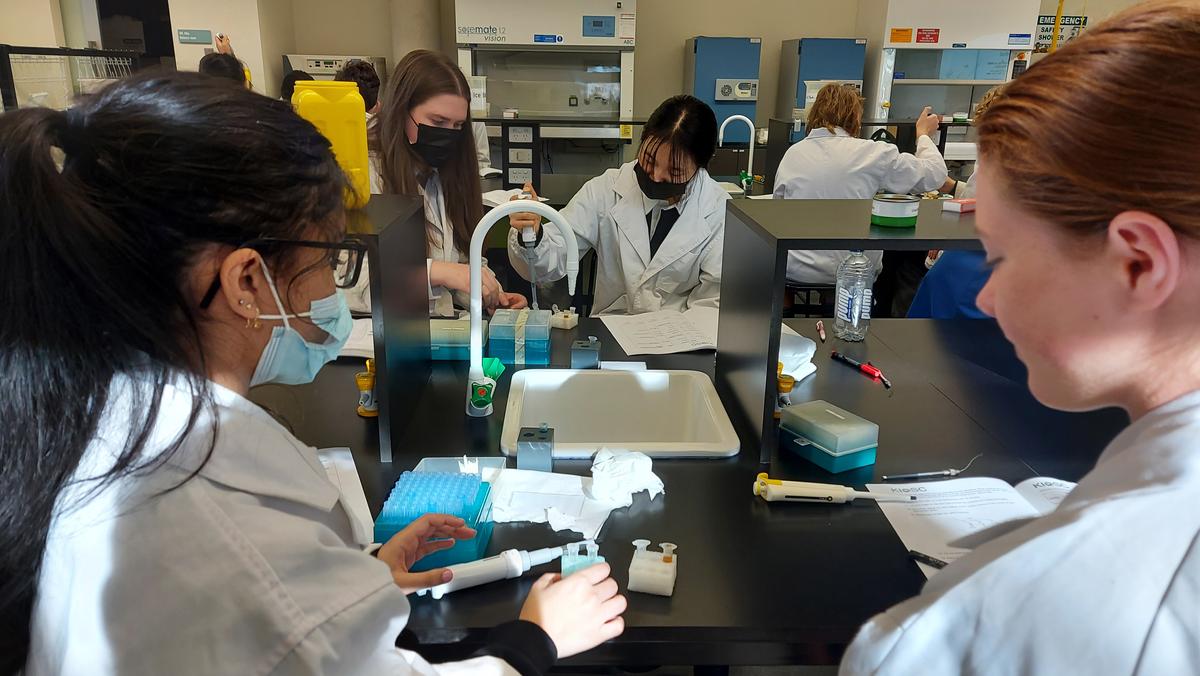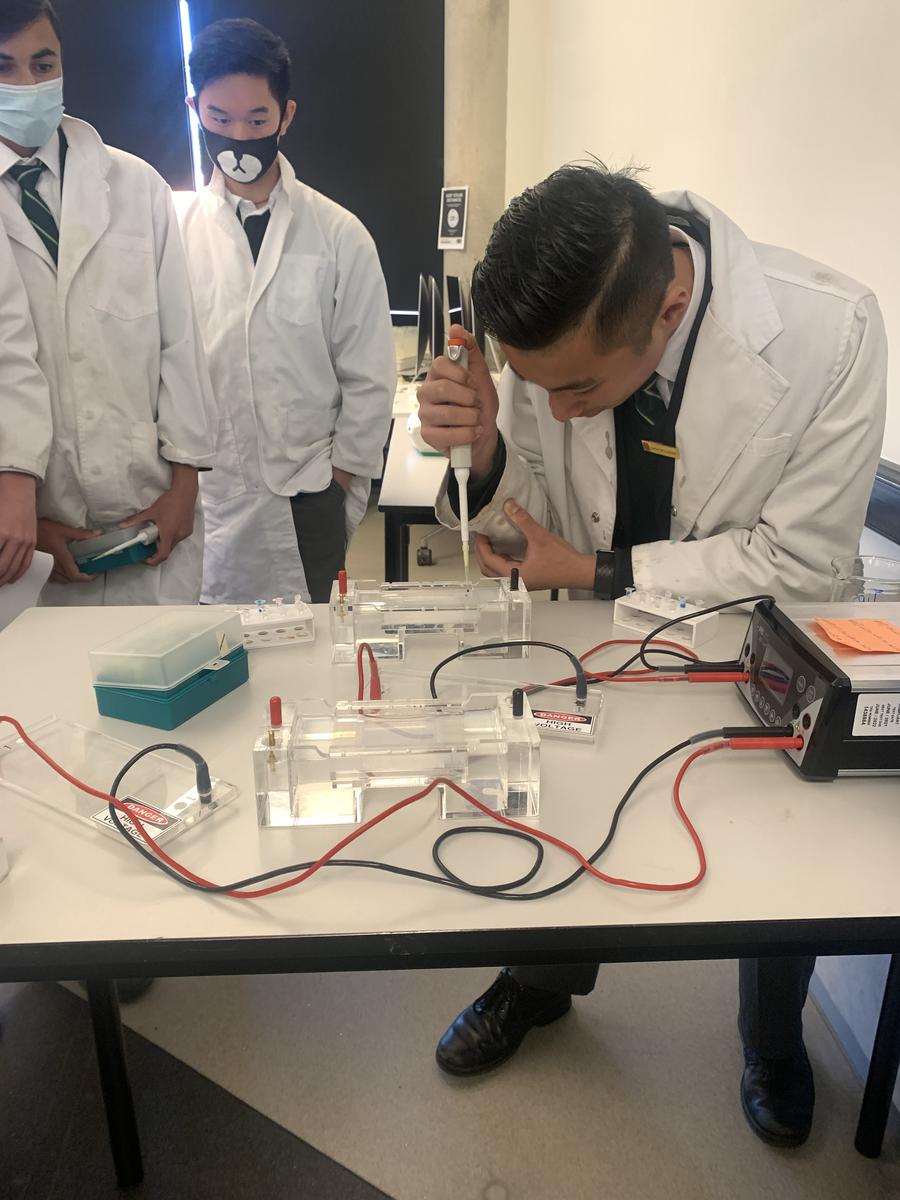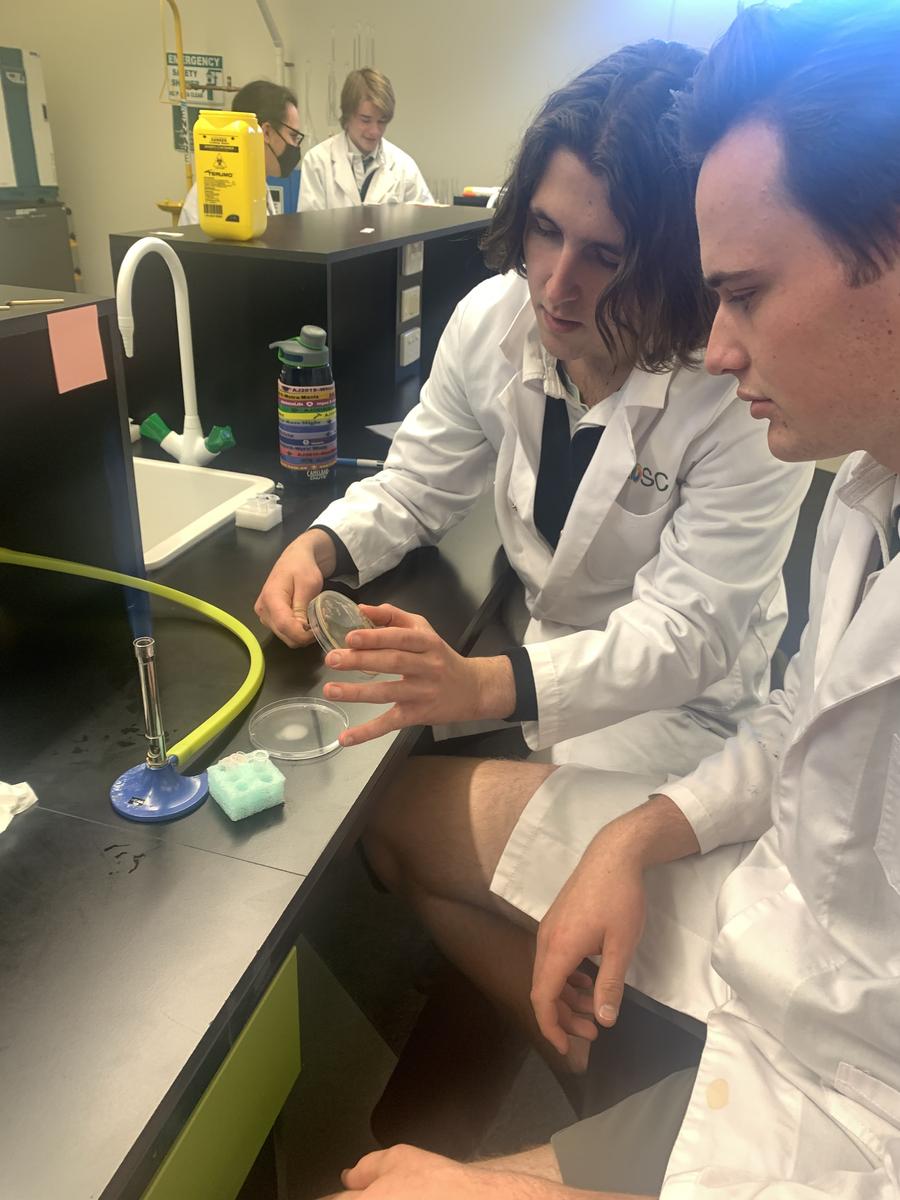Science

Year 8 Science
This term Year 8 students participated in some dissections. The HAP class dissected sheep brains and the mainstream Year 8’s dissected sheep hearts.
During our unit on ‘the brain’ in science, we dissected a sheep’s brain and analysed its different areas and impacts on the body.
We began by going through the appropriate handling of the brain and some main elements to keep an eye out for.
Then we identified some of the components of the brain that we had been learning about (temporal lobes, occipital lobe, cerebellum, frontal lobe, brain stem, etc.) before slicing it in half to take a closer probe into the details.
I did most of the cutting and handling of the brain because the other people in my group didn’t seem to want to?
It was actually very interesting dissecting the sheep brain, which allowed us to further understand the anatomy of the brain by physically touching and learning about how it functioned and its role in maintaining and developing our body systems.
By Yasmin Wright.
Hello,
I am Adrian a student at Blackburn High School, in this school, there are many great experiments to do in the Science subject. One of the most interesting experiments was the sheep heart dissection, I felt quite excited when I first heard about it.
When the class was dissecting the heart, we learnt about how it worked and how to tell which side was the right and left side of the heart. It was quite interesting to learn about, the class had labels to stick onto the heart so that you can learn to tell what the parts of the heart were. I liked learning about the heart.
I hope I can do more dissections in the future.
Adrian
First Robotics Team visiting
Box Hill Hospital Operating Theatre Visit - new Robot!!!
On Tuesday the 7th of June, the FIRST Robotics Club had the privilage to experience Box Hill Hospital’s newly installed, one-of-a-kind Robot in their renovated Hybrid theatre. This innovative new Robotic arm which is also used to build the Boeing 747 planes will provide essential real time 2D and 3D imagery, improving medical assistance to the community. Our team of students and teachers had an exclusive look and demonstration of its operations, before being put into commission the following week. We learned what features and procedures had been implemented into the system to ensure the redundancy and safety of anyone within the room and outside.
Safety features included proximity senses similar to the ones in a car, which created visualization of surrounding areas, providing instant response to obstructions closing in or surrounding it, implementing the robot to automatically provide slower movement of operations depending on input information. Soft cushion paneling for the arm allowed it to remain safe once it encountered a patient or person in the room.
Our robot also has this safety feature, we have built and installed bumpers to protect it from injury on and off the field especially from other robots, providing better safety to people around it.
This is only a pinch of things we discussed but overall, the group had tremendous amounts of fun in learning about the innovations in robotics, seeing how both safety and ethics were considered in into the design of the robotic arm and the impact this arm will have on the hospitals ability to provide care. The team can’t wait to implement knowledge we learnt from this excursion into our current robot and future ones to come in the following years.
By Alex Woodhouse
Member of the First Robotics Team
VCE Biology Masterclasses
Year 12 Biology students attended a VCE Masterclass at the Knox Innovation Opportunity and Sustainability Centre (KIOSC) at Swinburne University.
Students used the tools and techniques used to manipulate DNA. They modified the DNA of bacteria to produce insulin. They also inserted a gene that caused the bacteria to glow in the dark.
This jam-packed, hands-on day allowed students to develop a better understanding of these important genetic techniques.
External Holiday Science Activities
The Annual Swinburne Santos Science Experience 2022
This year we are looking for Year 9 and 10 students who are excited about Science to come on campus to learn and explore STEM through interactive, hands-on workshops and demonstrations. We’re excited to offer a program that will encourage natural curiosity and explore the never-ending possibilities of science. Explore the universe in virtual reality, conduct experiments in our Chemistry labs and explore the applications of the world class Australian Synchrotron. Out three day program encourages curiosity and explores the never-ending possibilities of science.
- Date: Wed 6 - Fri 8 July
- Time: 8.30 am - 4.00 pm
- Venue: Swinburne University of Technology, Hawthorn Campus
- Cost: $190 for three day program
Contact: schoolprograms@swin.edu.au
*Funded places available, applications via the webpage
Robogals Hackathon
Robogals is hosting a hackathon for year 9-10 students over the holidays. Time and dates as follows.
- Day 1: 27th June 2022 (10:00am - 3:30pm)
- Day 2: 28th June 2022 (10:00am - 3:30pm)
- Day 3: 30th June 2022 (10:00am - 3:30pm)
- Day 4: 1st July 2022 (9:00am - 4:00pm)
Participants will be working in groups to develop ideas to solve a problem. They will then present their innovative solutions to a panel of judges, with prizes being awarded to the highest-scoring ideas.
Our industry partners (Jacobs and EY) will also be running masterclasses to support participants. There will also be a masterclass run by Robogals. Lunch will be provided on the last day of the Hackathon.
The registration date has passed, however they may still have places or can put you on a waitlist, email monash.events@robogals.org to find out more.



